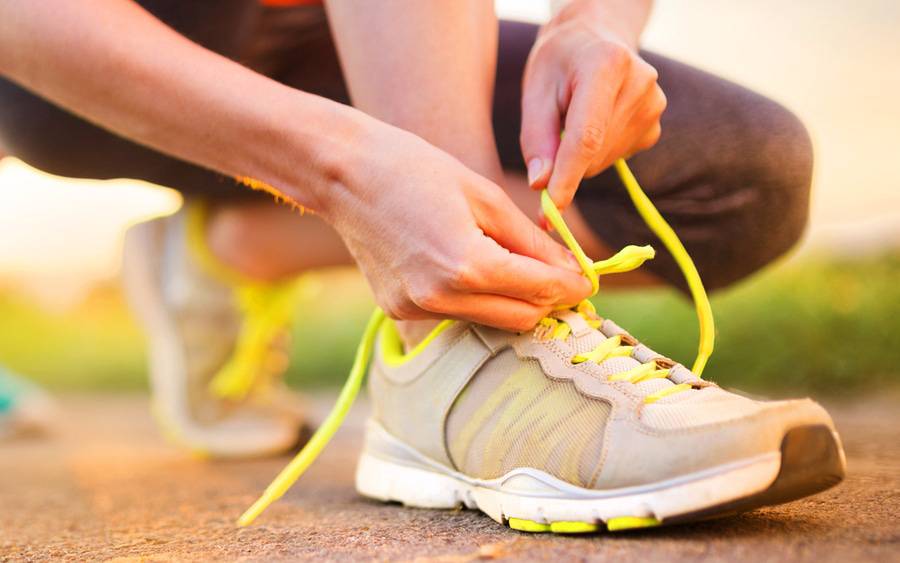How to Start Running to Lose Weight and Avoid Injury
9 tips to get you running regularly and not get hurt

9 tips to get you running regularly and not get hurt
Running is one of the best exercises for weight loss and improving health. But if you don’t plan or prepare well, you may risk injury and slow down your weight loss progress.
“Running has many benefits, such as weight loss, improved immune function, better sleep and reduced stress,” says Laika Nur, MD, a sports medicine physician at Scripps Clinic. “But if you’re new to running or haven't exercised in a while, it's best to start slowly and do it safely to avoid injuries.”
Here are some tips to help you start a running program for weight loss while reducing the risk of injury:
1. Run safely
There are two main levels of physical activity: moderate and vigorous. Running intensity varies based on fitness level, but it is usually seen as a vigorous activity.
If you have a chronic condition like arthritis, diabetes or heart disease, ask your doctor if running is safe for you and how much you should do.
If you’re new to running, try starting on a softer surface like a treadmill or track to prevent strains and injuries from hard pavement.
2. Start slow with a walk or jog
Do not push yourself to run a 5K right from the start. Give your body time to adjust by starting with shorter, easier runs.
Begin by jogging for 5 to 10 minutes, three times a week. Slowly increase your time and distance as your body adjusts. This approach is more enjoyable, long-lasting and lowers the risk of injury.
3. Get the right running shoes
Choosing the right running shoes for your foot type and running style is crucial to prevent injuries.
Consider going to a specialty running store for expert advice on shoes that match your running style. They will help you find shoes that offer the right support.
Replace running shoes when cushioning wears out from use over time.
4. Stretch to prevent running injuries
Before you start running or doing any intense physical activity, it’s important to give your muscles time to prepare.
“Dynamic stretching before running can help activate your muscles so they can handle the stress better and reduce the risk of injury,” Dr. Nur says. “Static stretching after running can help with recovery.”
Different types of stretching (static vs dynamic) before and after running can make you more flexible, improve circulation, reduce injuries and help you recover faster.
5. Listen to your body
Feeling sore when starting a new exercise routine is normal, but sharp or long-lasting pain means you should take a break and rest.
“Listening to your body and not pushing through pain is crucial. You want to avoid a more serious injury that could keep you out for weeks,” Dr. Nur says.
You can reduce pain and swelling by taking over-the-counter anti-inflammatory drugs like naproxen or ibuprofen. All medicines have risks. Ask your doctor how to use them safely.
If you feel more pain after exercising and it causes limping or other problems, and over-the-counter drugs don’t work, see a doctor.
6. Practice consistency
To reach your weight loss goals and improve as a runner, it’s important to be consistent. Establish a routine that works for you and your schedule. “Whether you prefer running in the morning or after work, find a time that works for you and make it a habit,” Dr. Nur says.
If you’re new to running, try running every other day. Resting between runs helps your body get stronger, allowing you to tackle more difficult workouts in the future.
7. Eat healthy, stay hydrated
If you’re running to lose weight, you may need to reduce the number of calories you eat. Make sure to follow a balanced diet with carbs, protein and healthy fats. Carbs give you energy for your workouts, and protein helps your muscles recover.
Hydration is crucial for energy, performance, mood and breathing; dehydration can lead to serious health problems.
8. Strength training
Strength training is important for runners. It helps build strong muscles that support your joints and make you a better runner. This can prevent injuries like shin splints, runner’s knee and plantar fasciitis. Try to do strength exercises like squats, lunges and core workouts at least two times a week to improve your running performance.
9. Stay motivated
Tracking your runs can keep you motivated and show your progress. Use a running app or journal to record your distances, times and how you feel before and after each run. This can help you notice any patterns or causes of discomfort or injuries.
“Tracking your progress can make you feel accomplished and show improvements, even small ones. It can also help identify issues early,” Dr. Nur says.